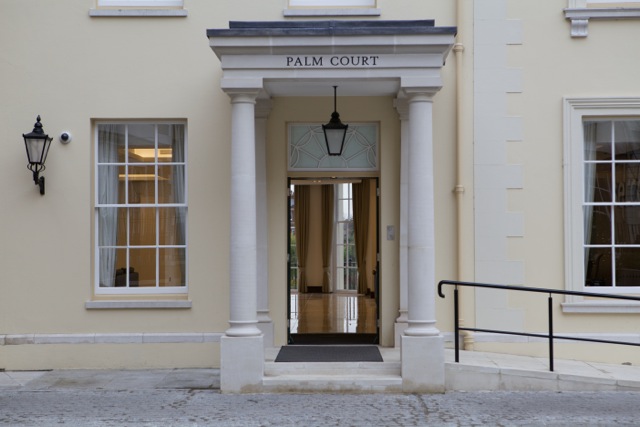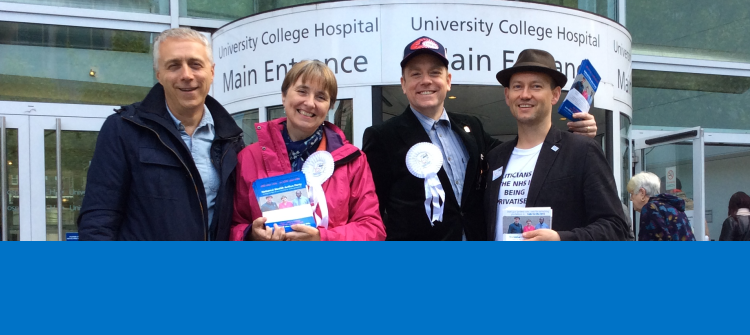The Fight to Save One of the World’s Greatest Wonders: The NHS
In October last year, I was inspired by Ken Loach’s film ‘The Spirit of 45’ to blog about the NHS , and remark that it was a world historic achievement in organised human compassion. I’m not the only one to think this – a recent poll here showed that the NHS is the number one institution that the British people are most proud of – beating the Monarchy and the army. At time of writing, I was fully aware of the drastic funding cuts by the Tories and political mismanagement (in which both major parties have excelled), but it’s only been in the last couple of months that I’ve realised the pride and joy of the British people, the envy of the world, is being systematically run down, cut up and sold off to private for profit companies and private finance initiatives (PFIs).
This is not a conspiracy theory, it’s actually happening – at significant cost (billions of pounds) to the taxpayer (you know the old saying – privatise profits and socialise risk) – and if you want to know the distressing details, you could start with considering this Private Eye piece, then go onto looking at the hard hitting information on the National Health Action Party website.
There are grassroots movements springing up all over the UK to try and save the NHS – in the last couple of months, I have joined two of them – the Islington branch of Keep Our NHS Public, and the NHAP. The latter group ran candidates in the European Parliament Elections which were held last week – you can see some of the team in the feature photo to this blog (aren’t they lovely? don’t you just want to run up and squeeze them with gratitude?). I helped out by writing a campaign song “We Love You, NHS”, producing a video clip, and putting a short but moving address to the UK’s ambulance workers by much loved comedian Rufus Hound on my paramedic Facebook page.
NHAP as a new party with no funds but a membership boasting clinicians, intellectuals, celebrities and ordinary concerned citizens, was consistently ignored by the media in favour of the far right wing UKIP – who not surprisingly did well in the elections, running on an anti-immigration platform. Ironically, typical UKIP voters- older, white, traditionalists – are probably unaware that UKIP, like the other major parties (except The Greens) has no intention of protecting the NHS – the most quintessentially British institution, that they cherish so much and need more and more as they age.
How Come We Didn’t Know?
The selling off of NHS services and siphoning off of taxpayers money into the pockets of private healthcare providers was not an election commitment by the Government, nor is this process being documented via public announcements and subject to community and media scrutiny. Rather, the Tories are robbing the British people of their most loved institution by stealth, and the Labor Party – complicit in opening the gates to privatisation in the first place – have almost nothing to say.
As is often the case in the face of political moral failure, it is up to the ordinary people to lead the way, including artists. I went to an photographic exhibition in Hackney a couple of weeks ago about the privatisation of the NHS called “How Come We Didn’t Know?”. I was so impressed (and unsettled) by the images I saw, I did a brief interview with the photographer, Marion MacAlpine. I’m handing over the rest of this blog to that interview and Marion’s striking images.
Nicole: Tell us about “How come we didn’t know?” photographic exhibition – what will people see when they turn up?
Marion: This photographic exhibition is about the corporate take-over of the NHS, and below are a few of the images. The exhibition starts with the Private Finance Initiative (PFI) which created many of the debts faced by NHS hospitals.

with average annual payments of £115m at today’s prices
New buildings at the Royal London Hospital cost £1.1bn to build, but the eventual cost through PFI will be £7.1 billion, with average annual payments of £115m at today’s prices
It goes on to show the lavish London headquarters of large corporations that are now profiting from providing so called ‘NHS’ services all over the country.


It shows different ways the corporates maximise profit from NHS funding by cherry picking services they provide, for instance by accepting only routine cases or by ditching unprofitable contracts; or through using tax havens.

Private hospitals can choose which patients they will accept, and often pass on complex cases back to the NHS.
It highlights the central role of corporate consultancies in rapid privatisation of the NHS and how they are complicit with the government in working towards TTIP, the Transatlantic Trade and Investment Partnership being negotiated between the EU and the US.

This is where the City of London Corporation’s secretive International Regulatory Strategy Group meets – a key body preparing the UK for TTIP in 2014. TTIP will give global corporations far greater rights to bid for contracts to run the NHS and other public services as long as the NHS retains its commissioner-provider split. Scotland and Wales do not have this split.
Nicole: What inspired you to put on this exhibition?
Marion: I live in Hackney, where a private company Harmoni were providing the Out of Hours services. Tragically a baby died in their care after treatment described by the coroner as ‘wholly inadequate’. I photographed the premises they worked from which looked like part of the NHS, and followed the profit trail to their parent companies Care UK and private equity company Bridgepoint Capital. Then I decided to expand this to include the headquarters of all the large corporates I could reach.

Nicole: How did you go about finding out the locations of the private NHS providers?
Marion: On the web.
Nicole: What do you hope to achieve with your photos?
Marion: The extent and processes of the corporate takeover are both mystifying and little known to most people. The exhibition aims to make the complexities understandable through striking images, and to inform a broader audience.
You can see the exhibition next in Brighton, hosted by Brighton Defend the NHS, from 24th to 26th June at the Brighthelm Centre, North Rd Brighton BN1 1 YD tel 01273 821512
The exhibition will shortly be available on the web under Artists for the NHS and contact konph@hackneykeepournhspublic.org to discuss using the exhibition in your own area.
